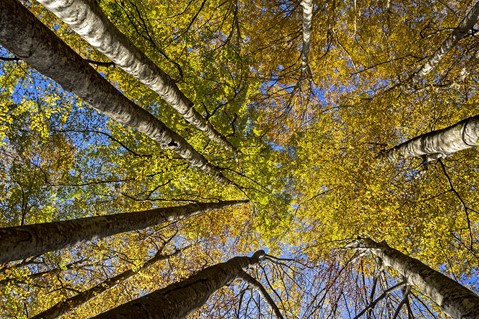 Effects of climate change on beech forests
Effects of climate change on beech forests
Climate change affects many elements of ecosystems and vegetation is one of them.
The functioning of plants at the physiological level and their development throughout their life cycles occur under specific environmental conditions, so it is to be expected that changes in climate will have a significant impact on plants, both at the individual level and at the population, community, ecosystem or biome level. In addition, the fact that plants are sessile organisms means that, once established in one location, they cannot move to other locations. This means that their capacity to avoid the effects of climate change is more limited than in other organisms that have a greater capacity mobility.
More frequent heat waves, floods or droughts increase damage and mortality in plant populations and communities. In addition, increased carbon dioxide concentrations and temperatures directly affect plant growth, reproduction and resilience. As a consequence of a 0.5oC warming in recent years, plant distribution has shifted and crop yields have decreased. However, the impact of temperatures and CO2 on plants depends on many factors, such as the photosynthesis subject of plants or the existence or not of drought for plants. In turn, these factors interact with each other, making it difficult to understand how climate change affects plants and vegetation.

There is clear evidence of the displacement of the area distribution of plant species as a consequence of climate change, varying in their altitudinal and latitudinal ranges. These changes are more noticeable at the limits of area distribution of plant species or communities. For example, in northern Spain, where temperate forests have their southern distribution limit, their sensitivity to climate warming and increased intensity and frequency of droughts under climate change could be greater, given their proximity to the Mediterranean region. An accurate knowledge of forest functioning in these bordering regions will allow us to predict and manage changes due to climate change. For example, the establishment of dominant tree seedlings is one of the phases where the highest mortality occurs in their populations and its study can be core topic to understand the vulnerability of these forests to climate change.
In a study conducted in the Señorío de Bertiz natural park (Navarra), we examined the small-scale spatial patron saint of a mixed bank of beech and oak seedlings and juveniles in two areas of an unmanaged temperate deciduous forest with different environmental conditions.
The stand structure in both areas was similar, but while in one plot beech dominated the canopy, in the other it was dominated by oaks. Beech and oak seedlings were distributed in aggregates, while beech juveniles showed a random distribution. At broader scales, seedling and juvenile abundance was influenced by environmental conditions as well as by skill between species, whereas at finer scales the spatial patron saint was mainly influenced by stochastic processes, probably related to predation and seed set.

The seedling-juvenile bank structure evidenced a clear advantage of beech over oak in terms of regeneration. Beech seedlings and juveniles tolerate canopy- and understory-induced stress and persist for many years, whereas oak seedlings decline within a few years. Therefore, if current conditions persist, beech seedlings and juveniles will be able to grow rapidly and stands will be transformed into monospecific Fagus sylvatica forests in the not too distant future, a fact that demonstrates the potential effect of climate change on biodiversity.
